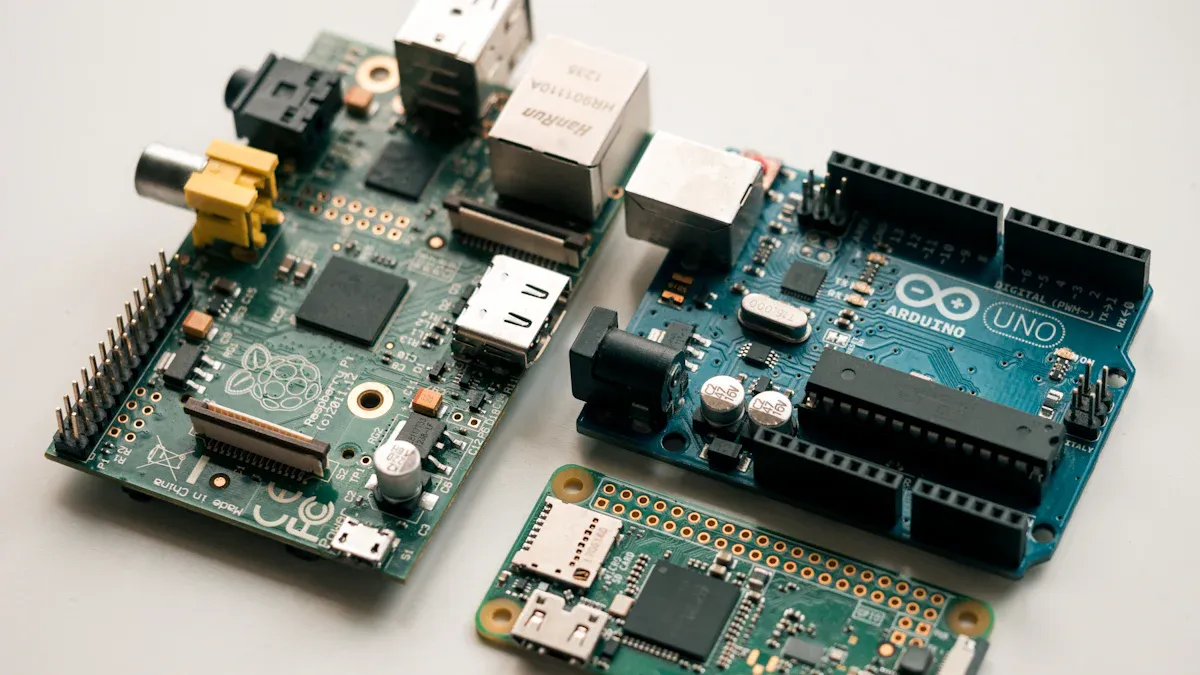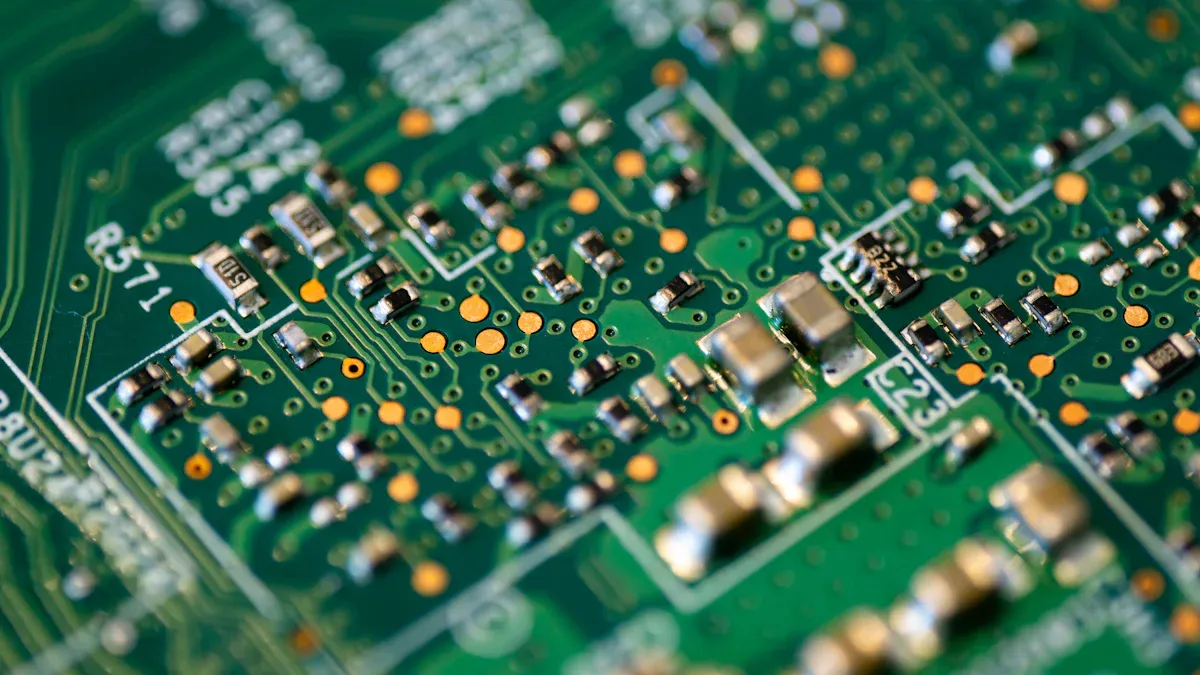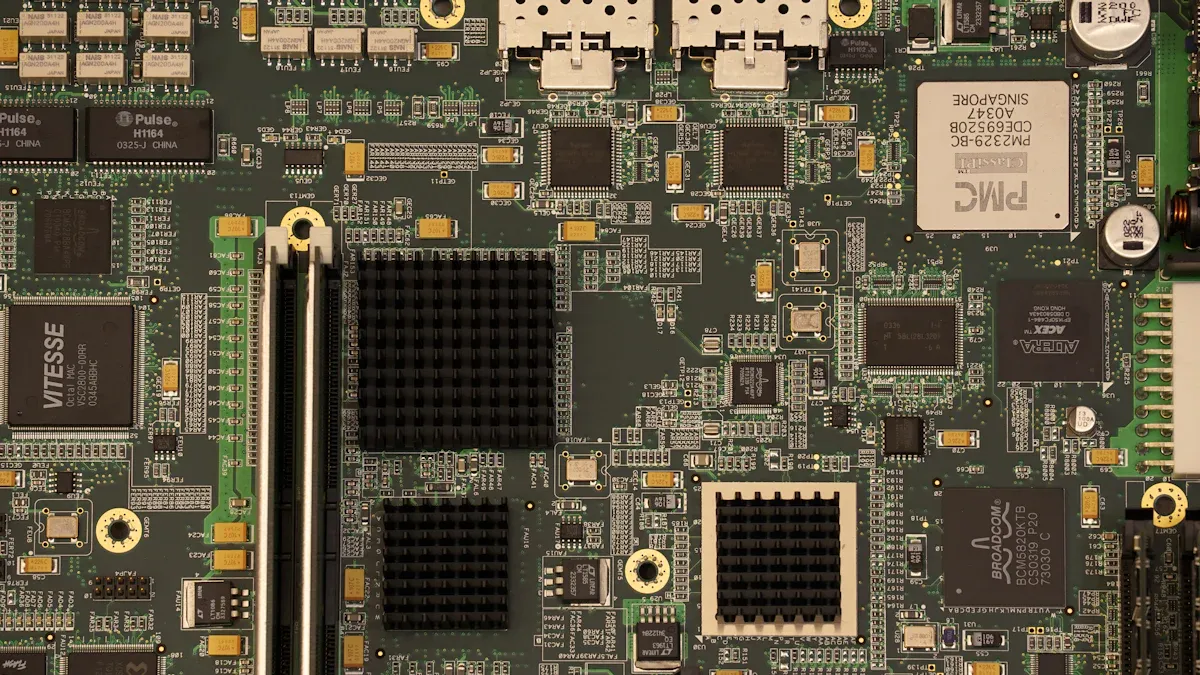close
Choose Your Site
Global
Social Media
Views: 0 Author: Site Editor Publish Time: 2025-09-29 Origin: Site

You might ask if a motherboard and a circuit board are the same. Imagine you are buying computer parts and feel confused about what each part does. The big difference is that a motherboard is a special circuit board. It connects and controls important parts of a computer. Knowing this helps you pick the right parts. It also helps you avoid expensive mistakes when you learn about electronics.
A motherboard is a kind of circuit board. It links and manages all the main parts of a computer.
Circuit boards are in many things, like TVs and phones. They usually do just one job.
Motherboards let you add upgrades and new parts. Most circuit boards do not let you change them.
Knowing the difference between motherboards and circuit boards helps you pick better electronics.
If you know how these parts work, you can fix problems with your devices more easily.

A circuit board is a thin board that holds electronic parts. It connects these parts inside things like computers, phones, and TVs.
A printed circuit board uses a base that does not carry electricity, like fiberglass or resin paper.
There is a copper layer on one or both sides.
The copper makes paths that link parts together with solder.
Some people call it a printed wiring board.
A circuit board helps electricity go to the right places in a device.
There are many types of circuit boards in electronics today. Each type is made for a special job. Here is a table that shows the main types and where you might see them:
Type of PCB | Description | Applications |
|---|---|---|
Has one copper layer. | Calculators, radios, LED lights | |
Double Sided PCBs | Copper on both sides, joined by small holes. | Car electronics, industrial controls, amplifiers |
Multi-layer PCBs | Has many layers for harder circuits. | Computers, telecom, medical devices |
Rigid PCBs | Hard and does not bend. | Laptops, cars, home electronics |
Flexible PCBs | Can bend and twist easily. | Smartwatches, medical tools, foldable devices |
Rigid-Flex PCBs | Mixes hard and bendy parts. | Aerospace, military, advanced gadgets |
You can see that these types help people make simple toys and also powerful computers.
Circuit boards are in almost every electronic device. They connect parts and control how electricity moves so things work right.
In electronics for people, circuit boards are in about 70% of products, like phones, TVs, and tablets.
In cars, they help run things like maps, safety, and music.
For the Internet of Things (IoT), circuit boards power smart home devices.
A circuit board lets your favorite gadgets work well every day.

The motherboard is the main circuit board in a computer. It works like a center that connects everything. When you turn on your computer, the motherboard controls how data moves. It links the CPU, memory, storage, and other parts. These parts work together because of the motherboard.
Here is what the motherboard does:
It controls how data moves between the CPU and other parts.
It links important parts like memory and storage.
It gives power to each part so things work well.
It helps parts talk to each other to finish jobs.
You will see sockets for the CPU, RAM, and cards on the motherboard. There are also ports for USB, audio, and network cables. Without the motherboard, computer parts cannot work together.
Tip: If you want to make your computer better, start with the motherboard. It decides what other parts you can use.
Motherboards have special things that make them different from other circuit boards. They are bigger and have more connectors. They can work with many types of hardware.
Here is a table that shows how motherboards are different:
Feature | Motherboard | Circuit Board |
|---|---|---|
Functions | Connects all electronic parts and accessories to make the computer work | Does special jobs in devices, like controlling displays or timers |
Components | More complex with slots for processors, memory, and adapters | Simpler parts like resistors and capacitors |
Size | Usually bigger and heavier because of more parts and connectors | Can be different sizes, often smaller and lighter for simple devices |
A motherboard can support many devices at the same time. You can add more memory, graphics cards, or storage. This makes the motherboard the most important part of your computer.
A motherboard is like the boss of a computer. It links all the main parts together. These parts are things like the CPU, memory, and storage. A regular circuit board does one job. It might help a TV show pictures or make buttons work on a remote. The motherboard does many jobs at the same time. A circuit board usually does just one thing.
Here is a table to help you see the difference:
Feature | Motherboard | Circuit Board |
|---|---|---|
Functions | Central hub for connecting major hardware parts | Provides electrical connections for devices |
Complexity | Highly complex, with many chipsets and slots | Can be simple or complex |
Purpose | Connects CPUs, GPUs, and other peripherals | Supports any circuit-based application |
Integration | Includes sockets, ports, and embedded systems | Usually less integrated |
Components | Processors, memory slots, chipsets | Resistors, capacitors, simple ICs |
Applications | Computers, servers, gaming consoles | TVs, phones, toys, and more |
Tip: If you want to make your computer better, start with the motherboard. It decides what other parts you can use.
Motherboards have lots of parts. They have slots for memory and sockets for the CPU. There are connectors for graphics cards and storage. You also see ports for USB, audio, and network cables. Most circuit boards do not need all these things. They might only have a few chips and some resistors. Sometimes there is just one connector.
Here is another table to show you the main differences:
Component/Function | Motherboard | Standard Circuit Board |
|---|---|---|
Purpose | Integrates all components, manages system | Usually designed for a single task |
Complexity | More complex, multiple layers and links | Can be simple or complex |
Connectivity | Main connection point for all components | Typically operates independently |
Expandability | Allows upgrades and new parts | Usually has a fixed function |
Note: You can add or change parts on a motherboard. Most circuit boards do not let you do this.
Motherboards are used in computers and game consoles. They bring all the main parts together so they work as a team. Circuit boards are found in almost every electronic device. You see them in TVs, phones, toys, and kitchen tools. The motherboard is a special circuit board for computers. Circuit boards are used in many things you use every day.
Motherboards: Used in computers, laptops, servers, and game consoles.
Circuit boards: Found in remote controls, LED lights, washing machines, and more.
Did you know? Your favorite gadgets would not work without a circuit board.
Motherboards are harder to design than most circuit boards. They have many layers stacked on top of each other. Each layer has its own job. The motherboard must handle power, data, and connections for many parts. Designers test motherboards a lot to make sure they work.
Here is a table that compares the design process:
Aspect | Motherboard PCB | General Circuit Board |
|---|---|---|
Complexity | High, with many layers and functions | Lower, often simpler |
Components | Many, including CPU, memory, and peripherals | Fewer, handling specific tasks |
Functionality | Supports many functions and communication | Limited to specific functions |
Design Needs | Detailed design and testing for reliability | Less strict design requirements |
Motherboards have special problems:
They use many layers, so they are tricky to make.
They must handle power, data, and connections all at once.
Designers add special parts like CPU sockets and memory slots.
Each motherboard is tested to make sure it works with all the parts.
Today, new technology helps both motherboards and circuit boards. HDI boards fit more parts into small spaces. Flexible and rigid-flex PCBs let you make bendy devices, like foldable phones. New materials help both types last longer and work better.
Remember: Both motherboards and circuit boards are important. The motherboard is the most complex and central board in your computer.
Circuit boards are found in many devices. Motherboards are the most complex type. Motherboards are the main hub in computers. They connect the CPU, memory, storage, and other parts. Most circuit boards are not as complex or connected.
Motherboards have 6 to 8 layers or more. Basic circuit boards have only one or two layers. More layers help motherboards handle more data and power. This makes them very important for computers.
Here is a table that shows the main differences:
Key Point | Motherboards | Circuit Boards |
|---|---|---|
Central System Integration | Connects CPU, memory, storage, and peripherals. | Usually supports one function or device. |
Power Management | Distributes and regulates power for all components. | May provide simple power connections. |
Data Bus Management | Manages data transfer and bus speeds. | Rarely manages complex data buses. |
System Initialization | Hosts BIOS/UEFI for startup and configuration. | Does not control system startup. |
Expansion Capabilities | Has slots for graphics cards, memory, and more. | Usually fixed, no expansion slots. |
I/O Port Integration | Centralizes ports for USB, audio, and network. | May have limited or no external ports. |
System Monitoring | Uses sensors for temperature and voltage. | Seldom includes monitoring features. |
Form Factor Standardization | Follows industry standards for size and compatibility. | Size and shape vary widely. |
Layer Count | 6 to 8 layers or more, high component density. | 1 or 2 layers, lower component density. |
Application | Central board in computers and servers. | Used in toys, appliances, and simple electronics. |
Motherboards are special circuit boards made for computers.
Most circuit boards do just one job in things like remote controls or LED lights.
You can upgrade a motherboard by adding new parts. You cannot do this with a basic circuit board.
Tip: To learn how your computer works, start with the motherboard. It is the heart of the system.
You use electronics every day. Knowing the difference between a motherboard and a circuit board helps you understand how your devices work. When you know what a motherboard does, you can solve problems faster. If your computer stops working, you can check the motherboard first. You also learn that a circuit board in your TV or remote has a different job. This knowledge helps you talk to repair technicians and ask better questions.
Tip: When you know the parts inside your devices, you feel more confident using and fixing them.
If you buy electronics or parts, you need to know what you are getting. A motherboard is not the same as a simple circuit board. When you shop for computer parts, you look for motherboards that match your needs. If you need a custom circuit board for a project, you can ask for the right type. Dongguan Xinrongxing Technology Co., Ltd. offers custom PCB manufacturing. You can get single-sided, double-sided, or multi-layer boards for your products. Understanding these differences helps you make smart choices and avoid costly mistakes.
You save money by buying the right part.
You get better performance from your devices.
You can explain your needs clearly to suppliers.
If you love technology, you want to know how things work inside. Understanding the difference between a motherboard and a circuit board gives you an edge.
You make better decisions about design and function.
You see how each part connects and works together.
You understand the special role of the motherboard in data exchange and connections.
Xinrongxing’s expertise in custom PCB manufacturing helps you turn your ideas into real products. When you know what you need, you can work with experts to create the perfect solution for your project.
You want a partner who knows how to make PCBs. Xinrongxing is a trusted company in this area. They have worked with big brands like Huawei, ZTE, Xiaomi, and TCL. You get good quality and service from them.
Xinrongxing is skilled in many important things:
They design and plan printed circuit boards.
They make single-sided, double-sided, and multi-layer PCBs.
They put electronic parts onto the boards.
They find good parts for your projects.
Xinrongxing checks each board carefully. Their team makes sure every board is right for you. You get help from people who want you to do well.
When you pick Xinrongxing, you get experts who help you from start to finish.
Xinrongxing has many services for your project needs. You can ask for custom solutions for things like power supplies, home appliances, and LED lights.
Here are some services you can use:
Service Type | Description |
|---|---|
OEM Custom Service | Custom PCB making, including single-sided PCBs and assembly |
SMT PCB | Surface Mount Technology PCB making |
Printed Circuit Board Assembly | Full assembly services for your circuit boards |
You can also choose from many products, such as:
22F half glass fiber power circuit boards
CEM-1 home appliance circuit boards
FR-4 antenna circuit boards
Aluminum-based LED circuit boards
Xinrongxing follows strict rules for quality. You get boards that meet IPC, UL, RoHS, and ISO9001 standards. This means your boards are safe and work well.
Xinrongxing keeps your information private. They offer custom services and keep your designs secret. You can trust them to help you, no matter your project or industry.
With Xinrongxing, you get a partner who gives you quality, choices, and peace of mind for every PCB order.
Motherboards and circuit boards look alike, but they do different jobs. Motherboards are made to run computers. Circuit boards can be used in many ways. Motherboards have a fixed design and connect straight to power. Circuit boards are often small, cheap, and can be changed for special needs.
Think about what your project needs before you pick.
Make sure it works with your parts, has enough memory, and can add more.
Look at price, how well it works, and how quickly you need it.
If you want help with custom PCBs, Xinrongxing always gives good solutions.
The motherboard connects all the important parts inside your computer. You use it to link the CPU, memory, storage, and other devices. It helps everything work together.
Yes, you see circuit boards in many devices. Phones, TVs, remote controls, and even kitchen appliances use circuit boards to make things work.
You need a motherboard for computers or gaming consoles. You choose a regular circuit board for simple devices like LED lights, toys, or small gadgets.
Tip: Always check your device’s needs before you buy a board.
You can upgrade a motherboard by adding new parts, such as memory or graphics cards. Most regular circuit boards do not let you add or change parts.
Xinrongxing gives you high-quality boards, fast service, and strong support. You get custom designs for your project. The team keeps your information safe.